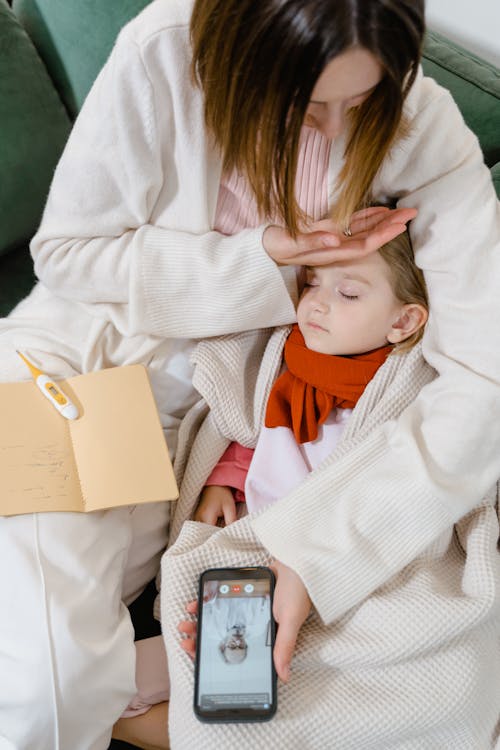Caregiver Focus on the Flu
Caregiver Focus on the Flu
Author: Mark Parkinson BsPharm: President AFC-CE
Credit Hours 2 - Approximate time required: 120 min.
Educational Goal
Differentiate between the flu and other common illnesses and how prevent and treat the flu.
Educational Objectives
- Distinguish between viral influenza and other common diseases and conditions.
- Teach about flu prevention
- Provide Flu Prophylaxis alternatives
- Explain how to properly treat of the flu.
- Provide details about different Flu treatments
Procedure:
Read the course materials. 2. Click on exam portal [Take Exam]. 3. If you have not done so yet fill in Register form (username must be the name you want on your CE certificate). 4. Log in 5. Take exam. 6. Click on [Show Results] when done and follow the instructions that appear. 7. A score of 70% or better is considered passing and a Certificate of Completion will be generated for your records.
Disclaimer
The information presented in this activity is not meant to serve as a guideline for patient management. All procedures, medications, or other courses of diagnosis or treatment discussed or suggested in this article should not be used by care providers without evaluation of their patients’ Doctor. Some conditions and possible contraindications may be of concern. All applicable manufacturers’ product information should be reviewed before use. The author and publisher of this continuing education program have made all reasonable efforts to ensure that all information contained herein is accurate in accordance with the latest available scientific knowledge at the time of acceptance for publication. Nutritional products discussed are not intended for the diagnosis, treatment, cure, or prevention of any disease.

Caregiver Focus on the Flu
With all the craziness on Covid capturing the public’s attention, it’s easy to forget that the regular flu is still around. It still makes people sick. It still puts people in the hospital. There is still a risk of death for the weak and infirm if they get the flu. Hey wait a minute, aren’t those the kind of patients you take care of in care homes? Maybe the flu is something you should focus on then. Just what is the flu anyway?
What is “The Flu”
The flu or influenza is one of those terms that have become fuzzy in the minds of the general public. Is it a cold that has gone bad? Is it the same as Pneumonia? What’s the deal with stomach flu? How do you treat cases of the flu? Are antibiotics involved? Who’s at the greatest risk for death? Being medical professionals, caregivers should know the answers to those questions. Having the right answers will help you take care of your people better.
According to the Bantam Medical Dictionary the flu is
“A highly contagious viral infection that affects the respiratory system.”
I want you to pay attention to the words “viral” and “respiratory”. We are not talking about a bacterial infection, just a virus. “Well, what’s the difference” you might be asking yourself. For the layman, it is very hard to tell the difference. The body has some of the same reactions or symptoms to both an infection caused by a bacterium or a virus. Namely runny nose, sneezing, cough, fever, sore throat, achiness, and being tired. Symptoms occur 1-4 days after exposure and usually resolve themselves in 7 to 10 days.
 Virus Virus |
 Bacteria Bacteria |
To make things easier for caregivers, it is important to note that bacterial infections are a lot less prevalent than viral influenza. So much so that it is safe to assume the flu was caused by a virus unless proven otherwise. On the other hand, to make things more complicated for caregivers it is possible to have both happen at the same time. No wonder the definition of the flu has gotten fuzzy. Most often the virus will start the infection. While the body is weakened, bacteria will start to grow out of control and make things worse.
Fortunately for caregivers, you have a doctor to fall back on. It’s their job to worry about such things. They have easy tests that they can run to determine if it’s a bacterium that is causing the symptoms or not. As far as you’re concerned your caregiving actions will be the same for both. The only difference in my opinion is when to start asking about getting an antibiotic prescription? Again, in my opinion, that is when symptoms are getting much worse or not resolving as expected.
Now you don’t want to be that caregiver who makes the doctor dispense a drug when one is not needed, “just in case”. In-home caregivers need to be better than that. There are a set of symptoms that you can watch for that will let you know when it’s time to call for an antibiotic.
Duke Heath website says,
- Symptoms persist longer than the expected 10-14 days a virus tends to last
- Fever is higher than one might typically expect from a virus
- Fever gets worse a few days into the illness rather than improving

Okay, now that we have covered the bacteria/virus thing, lets clear up the fuzziness caused by other questions. Is the flu the same thing as pneumonia? The answer is yes and no, well sort of. Talk about being fuzzy. Pneumonia is a condition of inflammation and puss collection in the lungs that makes it hard to breathe. That should make it easier to understand. Simply put the Flu is an infection that can cause the condition of pneumonia. In other words, pneumonia is the flu that has gotten deadly serious. When your residents start having troubles breathing it’s time to start using the word pneumonia. Use the word as a motivator to get others to cooperate in getting advanced care for your sick resident.
Now what about the stomach flu. The stomach doesn’t seem to fit in the definition, right? Well, it turns out that the sometimes stomach upset is involved in the flu. I know, more fuzziness to clear up. Obviously, we are talking about caring for a patient who gets an upset stomach, diarrhea, and vomiting. In my research for this article, I found that viral influenza can often cause these problems in children. Also the swine flu is notorious for cause stomach problems. If stomach problems occur along with coughing, sneezing and fever it still might just be the flu. So caregivers, when you see the combinations symptoms you can start asking more informed questions of the doctor. I know it’s kind of vain, but you have to admit that it’s kind of a rush when you get a surprised look from the doctor when you ask an insightful question.
The last fuzziness to clear up is the infection a cold or the flu. Both are viral infections. The difference according to WebMD is severity of symptoms.
“Flu symptoms are usually more severe than cold symptoms and come on quickly. Symptoms of flu include sore throat, fever, headache, muscle aches and soreness, congestion, and cough. Swine flu in particular is also associated with vomiting and diarrhea.”
https://www.webmd.com/cold-and-flu/flu-cold-symptoms
So In-home caregivers, it’s all about how much trouble is caused and how fast that trouble comes on. I guess how much “trouble” all depends on how infirm the client is? If you’ve got a strong as a bull client, who cares if it is a cold or the flu. They might complain a lot, but they’ll survive. But if you got a client that is weak as a new born lamb who cares if it is a cold or a virus. The doctor needs to get involved quickly. Practicality makes the fuzziness in definitions irrelevant.
I hope the flu fuzz is now gone. For the rest of this article, I will focus on viral infections of the respiratory system just like the medical dictionary said.
The Stats
According to data recently posted by the Center for Disease Control and Prevention (CDC), there have been up to 45 million cases of the flu, 810,000 hospitalizations, and 61,000 deaths annually. Statics of particular interest to In-Home Caregivers in the 2019-2020 flu season:
- More than 52,000 hospitalizations occurred in children aged less than 18 years old.
- 86,000 hospitalizations among adults aged 18-49 years occurred.
- Forty-three percent of hospitalizations occurred in older adults aged ≥65 years.
- 7,800 deaths (36% of all deaths) occurred among working-age adults (aged 18–64 years), an age group for which influenza vaccine coverage is often low
- Approximately 62% of annual flu-related deaths occur among older adults.
 Source:https://www.cdc.gov/flu/weekly/usmap.htm
Source:https://www.cdc.gov/flu/weekly/usmap.htm
Among the regular population of Americans, an outbreak of the flu is of moderate concern. It is an illness that resolves itself in less than 2 weeks. Hospitalization or death is a result of other issues in combination with influenza. The major risk factor for hospitalization and death seems to be from being infirm or having a chronic illness. Which is almost 100% of patients being taken care of by In-Home caregivers. I am confident in making that statement because if they weren’t infirm they would not be under your care. Even adults in mental health homes and youth in developmentally disabled homes can’t take care of themselves without you being there to keep them from getting sick.
In-Home Caregiving and the Flu
In-Home caregivers are uniquely suited to handle everything flu-related. You already know that you have the most power in influencing the people you take care of. The old hands in this industry know they can be relied upon to get things done at the right time and the right place if they know in advance what to do. After all, that is the reason why you’re taking the time to read this article, right? For those who are new to In-Home caregiving, you will see by the end of the article what an important part you can play in preventing and treating the flu in those you take care of. Let us lay the caregiving details out in the three Ps of influenza caregiving, -Prevention, Prophylaxis, and Proper treatment.
Prevention
A clean home and a healthy body are the best starts for flu prevention. That means cleaning and disinfecting frequently touched surfaces at home, (telephones, doorknobs, and various handles like bathroom faucets)
I recommend a disinfecting spray or cleaner (like Lysol or its equivalent) for surfaces. Alcohol wipes are another option. If it was me, I would stick with the soap and pull out the wipes if there is an active illness in the home. You can save money that way.
Get plenty of sleep, be physically active, manage your stress, drink plenty of fluids, and eat nutritious food. As far as personal hygiene, wash the virus off your hands often and protect the nose. The hand-to-nose path is a major route for viruses to travel. I don’t have as much confidence in just using alcohol wipes and hand sanitizing gels by themselves. I think it is better to use soap to remove the viruses off the skin than let them sit there hoping the alcohol will somehow kill off the virus.
Of course, good care homes are already doing all of the above as a matter of course. Great job, pat yourself on the back with a recently washed hand.
Unfortunately, a healthy person in a clean home can still get the flu. Up to 11% of the population can have influenza during the flu season. All of those sick people are sneezing and coughing, putting virus-filled droplets all over the place. Infected people will blow their noses then spread germs on any surface they touch. You come along and accidentally pick up a handful of viruses as you go shopping. You scratch your nose or rub your eyes and the infection spreads to you. You now carry the infection home, and you won’t show any outward signs of the flu for 1 to 4 days. All the while happily going about your business and spreading the virus to other surfaces as you go. Youth who go thru life clueless or thinking they are immortal are particularly talented at catching and spreading the influenza virus. They ignorantly travel through a virus-filled world and come home and give you a nice big hug. During flu season a giving family takes on a whole new meaning.
Clearly, In-Home caregivers need to do more to protect the ill and infirm in their care.
Prophylaxis
Prophylaxis is just a fancier way of saying prevention. Hang in there with me and you will see the difference from the previous paragraphs. I can sum it up in one word, Inoculation. If you hate needles, a shudder just went down your spine. Fortunately, in the case of preventing the flu, needles may not be involved. There are options for those who are afraid of getting poked by a syringe.
First, let’s talk about the process of inoculation. To inoculate means to introduce a substance into the body for the purpose of stimulating an immune response.
Now you don’t want to actually give the person the flu. So you alter the flu virus enough so you get the defense without causing the illness. It does not matter how the altered virus is introduced. As long as it gets into the bloodstream and the body defends itself by building up an immune response to the substance being introduced (antigen).
The quickest and easiest way to inoculate is to inject the antigen directly into the bloodstream via a needle. Fortunately for those who refused to be stuck with a needle the alternative is to introduce the antigen through the nasal passage blood vessels via a nasal spray (brand name FluMist Quadrivalent). There is a trade-off though. In order for the nasal inoculation process to work, they have to use LIVE but attenuated viruses. That means there is a slight chance that the person will actually get the flu. But I want to emphasize the word slight, meaning very, very small chance.
Because of this risk, Flumist is not recommended for children under two or people over 50, or anyone who has a weakened immune system. Oh, I almost forgot. They use eggs to produce some flu vaccines so people with egg allergies might have to use the nasal spray.
One more thing about inoculation. The flu virus has a nasty habit of mutating. Every year a new strain is discovered, and the inoculation process has to happen all over again. The bottom line for caregivers is to get your yearly flu inoculation. For yourself and the people, you take care of. It’s very easy to do, just go to the clinic or pharmacy to get flu pocked. They will handle all the prescription and payment issues. Depending upon circumstances, you might have to call ahead for the nasal spray and or go through some extra stuff to get the insurance to pay for it.
Just to be complete there is another prophylaxis method. That is stimulate or enhance the entire immune system through the use of Echinacea, mega-doses of vitamin C, or homeopathic medicine. Do these actually work? Well maybe, better than doing nothing I suppose. I personally have used homeopathic medicine for a cold but have little confidence in them preventing or treating the flu. Consult with your doctor before considering them for your residents.
Proper Treatment
Unfortunately, even with a clean home, a healthy immune system, and a flu shot, it is still possible to get the flu. Stubborn and ‘onery critter isn’t it. Or maybe the flu came before you got around to getting a flu shot. Regardless of the reason why, caregivers now have to deal with a sick person. Their efforts fall into three categories, disease treatment, symptom relief, and controlling the spread of the infection.
Disease Treatment
Disease treatment is stopping the infection and or reducing its severity. It may seem like an area where In-Home caregivers don’t have much say in, but you would be wrong. Caregivers can have a huge impact on disease treatment through the timing of therapy initiation and asking the prescriber the right questions. To truly appreciate your position, you have to understand something about viruses.
According to Scientific American
“For about 100 years, the scientific community has repeatedly changed its collective mind over what viruses are. First seen as poisons, then as life-forms, then biological chemicals, viruses today are thought of as being in a gray area between living and nonliving: they cannot replicate on their own but can do so in truly living cells and can also affect the behavior of their hosts profoundly… most evolutionary biologists hold that because viruses are not alive,” Source https://www.scientificamerican.com/article/are-viruses-alive-2004/
 Viruses have a protein coat that surrounds some genes, basically, that’s all. They do not have the biological mechanics to replace themselves or grow. They have to rely on a “living” host cell to do so. Once a virus penetrates the cell, it hijacks the cell's mechanisms and replicates itself continually until the cell dies. The cell then bursts, releasing many more viruses to invade other cells. If they don’t enter a cell, they just sit there doing nothing until the immune system comes along and cleans things up.
Viruses have a protein coat that surrounds some genes, basically, that’s all. They do not have the biological mechanics to replace themselves or grow. They have to rely on a “living” host cell to do so. Once a virus penetrates the cell, it hijacks the cell's mechanisms and replicates itself continually until the cell dies. The cell then bursts, releasing many more viruses to invade other cells. If they don’t enter a cell, they just sit there doing nothing until the immune system comes along and cleans things up.
 If viruses aren’t technically alive the immune system cannot technically kill them. What the body does is send out antibodies that recognize the protein sequences in the outer coat. The antibody latches on to the virus and inhibits them from entering a cell and releasing its genes. They also signal other components of the immune system to come along and break up and destroy the virus. By the way that is what vaccines are, antibodies that recognize a certain virus. The important part for you to understand is that you have to catch the virus quickly before it enters a cell and hijacks the cell replication mechanisms. Only then will you stop the infection from spreading.
If viruses aren’t technically alive the immune system cannot technically kill them. What the body does is send out antibodies that recognize the protein sequences in the outer coat. The antibody latches on to the virus and inhibits them from entering a cell and releasing its genes. They also signal other components of the immune system to come along and break up and destroy the virus. By the way that is what vaccines are, antibodies that recognize a certain virus. The important part for you to understand is that you have to catch the virus quickly before it enters a cell and hijacks the cell replication mechanisms. Only then will you stop the infection from spreading.
That is where In-Home caregivers can play such a significant role in disease treatment. They know the patient better than anyone else because they live with them. They will notice the signs and symptoms of a viral infection just as they start to show themselves. Then they get the patient to the clinic and tell the doctor the information he or she needs to know to initiate therapy.
Symptom recognition
In-Home caregivers do not have to know enough to make a diagnosis. They just have to know enough to suspect something is wrong that needs medical attention. The symptoms of a viral infection are:
|
|
Sounds like a cold right? That is because a cold is a virus too. Flu viruses are much more virulent though, so symptoms come on quicker. Caregivers who are looking for signs of the flu should watch for a rapid onset of symptoms. It is also important to note that fever may or may not be among the first signs of the flu.
Instead, look for the tickle in the throat that will not go away after a sip of water and a cough. Also, look for the headache that quickly turns into body aches and chills. The chill part is important because that is a sign the body has recognized a threat and is rapidly contracting and relaxing muscles to produce heat to fight an infection.
If a fever starts to develop then, at first, help the body defenses by keeping the body warm. “feed a fever and starve a cold” Of course, if it gets quickly too hot that’s a different matter, and also a possible sign of the flu. Call your doctor if the temperature is 103 F (39.4 C) or higher regardless of how quickly it comes on.
A sudden unexplained fatigue or exhaustion is also an early sign that the body senses an infection coming on and is shifting its resources from everyday function to an immunity response.
But the biggest red flag for caregivers to watch for is if all of the above symptoms suddenly happen at the same time. Caregivers should then record all the specifics of their findings and call the doctor’s office. Include actual measurements when possible (days from onset of symptoms, temperature, and the like). Most importantly ask if these are possible signs of the flu coming on. That starts the doctor to quickly think in terms of the flu.
After the phone call, the doctor may issue a prescription right away if you have built up a reliable reputation of knowing what you are talking about. Most likely though he or she will want to examine the patient themselves. They will most likely turn you over to his office staff to make an appointment.
This is the second place where skilled In-Home caregivers can have a big impact. If the receptionist gives you an appointment anytime but Now then you might have to get kind of pushy. Do so politely by asking, “I think that we're talking about the flu and a quicker response might be needed. Are you sure you don’t have anything sooner? If the answer is no then you must acknowledge that the doctor has only so much time in a day and you have to seek quicker medical help. You can try a “first come first serve” medical clinic or the emergency room. The quick-service medical offices are popping up everywhere. It would be wise for a skilled caregiver to know where they are in their community in advance. It would also be wise to tell the doctor you used one after you have come back from the appointment at the stat clinic or ER.
Managing the Prescription
The third place where In-Home caregivers can have a huge impact is managing the drugs after the prescription has been written. It starts by deciding if the doctor is in the right ballpark. It is amazing to me that after all the information about developing bacteria resistance, antibiotics are still being prescribed for flu-like symptoms. In a recent study of 14987 patients who had upper respiratory infections between the years 2013-15, 41% were given antibiotics. The study determined that 84% of those given antibiotics had a viral infection.
 So, after the prescriber hands you the prescription ask if it is an antibiotic. If it is or you recognize the drugs as an antibiotic beforehand it’s time to get pushy again by asking polite questions. I suggest, “Doctor I thought the symptoms were caused by a virus, isn’t there a test where you can use to rule out a viral infection. After all, if it is a virus time is important. By the way, the answer is yes, there are several virus antigens tests. If the doctor still insists on the antibiotic, then go with it and monitor the patient during therapy. If after 3 days the symptoms do not lessen or get worse, it’s time to call the doctor again. Bring up the virus question again or get a second medical opinion depending on how severe the symptoms are becoming. Use tact because you are going to have to work with this guy in the future.
So, after the prescriber hands you the prescription ask if it is an antibiotic. If it is or you recognize the drugs as an antibiotic beforehand it’s time to get pushy again by asking polite questions. I suggest, “Doctor I thought the symptoms were caused by a virus, isn’t there a test where you can use to rule out a viral infection. After all, if it is a virus time is important. By the way, the answer is yes, there are several virus antigens tests. If the doctor still insists on the antibiotic, then go with it and monitor the patient during therapy. If after 3 days the symptoms do not lessen or get worse, it’s time to call the doctor again. Bring up the virus question again or get a second medical opinion depending on how severe the symptoms are becoming. Use tact because you are going to have to work with this guy in the future.
If there is a viral infection diagnosis, there are 4 antiviral medications a prescriber can choose from.
|
Name |
Route |
Dosage |
|
Oseltamivir (Tamiflu) |
By Mouth |
Once daily for 5 days |
|
Peramivir (Rapivab) |
IV infusion |
One infusion |
|
Zanamivir (Relenza) |
Inhaler |
Twice daily for 5 days |
|
Baloxavir (Xofluza) |
By Mouth |
One single dose |
This is the fourth place for In-Home caregiver input. You know your people better than the doctor does. If there is a problem with needles, like in small children, you might ask about Relenza. If there are problems with taking medications, like with mental health patients, then questions about Xofluza might be appropriate to ask.
 There is a fifth place where skilled In-Home caregivers have to act, monitoring therapy. After two or three days if symptoms are not lessening or getting worse call the doctor. Depending on how severe the symptoms are, you might have to skip the doctor and go to the hospital. Especially in cases of difficulty breathing. Remember the pneumonia thing.
There is a fifth place where skilled In-Home caregivers have to act, monitoring therapy. After two or three days if symptoms are not lessening or getting worse call the doctor. Depending on how severe the symptoms are, you might have to skip the doctor and go to the hospital. Especially in cases of difficulty breathing. Remember the pneumonia thing.
Even if the symptoms are lessening you still have to monitor signs of medication side effects. Fortunately in antivirals, the side effects are typically mild and will go away by themselves after therapy is done. Usually, all caregivers have to do is work with the patient to make them feel comfortable until therapy is over. Except for signs of an allergic response. If they happen call the prescriber right away. Watch for rash, swelling, itch and difficulty breathing. Take these signs seriously, for with each dose given there is a chance of ever greater allergic responses. Neuropsychiatric events (see * below) are also to be called into the doctor but are on the rare side.
Antiviral side effects
|
Medication |
Side effects |
|
Oseltamivir (Tamiflu) |
Diarrhea, nausea, headache. skin reactions, delirium, hallucinations, seizures, or unusual behavior * |
|
Zanamivir (Relenza) |
Sinusitis, dizziness |
|
Peramivir (Rapivab) |
Diarrhea, skin reactions, delirium, hallucinations, seizures, or unusual behavior * |
|
Baloxavir (Xofluza) |
Diarrhea, nausea, headache |
Three final notes on medication management.
- Taking antivirals with food can lessen nausea.
- Xofluza should not be taken with anything that contains calcium, iron, or magnesium. They can stick to the drug and deactivate it. That included calcium-fortified foods, antacids, and vitamin supplements with mineral in it. Work with the doctor about which meds to change and make appropriate notes in the MARS about medication messed.
- Taking an antiviral medication will mess with Flumist because it’s a Live but attenuated (not as virulent) virus. Steps will have to be taken to adjust inoculation therapy.
| Symptoms | Relief |
Symptom relief
It’s time for me to get my pharmacist hat on. I recommend the following for flu and cold symptom relief.
- We have already covered, feed a fever-starve a cold,
- Take with food for drug nausea. If you need a food suggestion, soda crackers are great for drug-induced nausea. Applesauce and Cream of Wheat or Cream of Rice are also easy on the stomach.
- If diarrhea occurs, you probably don’t have to do anything beyond rehydration. The body is just trying to get rid of the nastiness quickly, so cooperate- don’t hinder, unless the doctor gives instructions to the contrary.
- Rest is best for general malaise symptoms.
- For pain, your regular PRN pain med will do, chiefly acetaminophen or NSAID. No aspirin for kids.
- For coughing, I recommended anything with dextromethorphan. Look for the DM on the label. In my opinion, guaifenesin is not needed if you push the fluids and it makes the cough syrup taste bad. Also, you actually don’t want to stop the coughing if it is getting the cud out of the lungs.
- I really don’t have any preferences for nasal sprays to help with breathing through the nose. Don’t forget nasal strips and Mentholated rubs. Mentholated rubs also feels good on sore muscles.
- For sore throats, cough drops can do double duty here, but throat numbers are more effective, like Cepacol, Sucrets, or Chloraseptic. If the throat numbers don’t touch the throat soreness call the doctor and ask about a secondary strep throat infection.
Whatever you use, get PRN orders from the doctor so you don’t get in trouble. If you have preferences, write them down and send them to the doctor with a yes or no check box and a place for the doctor’s signature. Don’t forget the strength, quantity, and directions or you can’t use it at the pharmacy as a prescription. Just use the instructions off the package

Stopping the Spread
If taking care of one person with the flu sounds like a lot of work, can you imagine taking care of a whole household and yourself with the flu? What a caregiving nightmare. That is a real possible outcome if the flu penetrates your home's defenses. An infected person can spread the virus to others from day one of the infection. They remain contagious for up to 7 days. Those with a weakened immune system will take longer to get the virus under control so they may be contagious for up to 2 weeks. If someone brings the flu into your home, it’s time to kick caregiving into high gear.
- Isolate the infected and make sure they are taking the right precautions to stop the spread.
-
- Cover the mouth when coughing with a tissue or cough into their elbow.
- Wash their hand often, especially after coughing, sneezing, or wiping the nose.
- Super clean up after the sick, especially handles. (Time to pull out the alcohol wipes)
- Have the rest of the household increase their hand washing. You can even issue those at high-risk bottles of saline nasal spray so they can keep their nasal passages cleaned out and virus-free.
- You the caregiver should use universal precautions when taking care of the sick. Wear gloves and treat everything coming off the infected as if it was full of contagions. Use the nasal saline spray often yourself. Keep a can of disinfecting spray or alcohol wipes handy and use them often.
You can also get everyone inoculated but it may be too late for that to stop the spread of the flu. It takes a while for those inoculated to build up an immunity. What you can do is give those at high risk a prophylactic course of antiviral meds. In one study, 752 uninfected people took Xofluza and it reduced the risk of influenza by 86%. Discuss the possibilities with the doctor.
The Difference Between Covid and the Flu.
It’s time to talk about the elephant in the room. Covid is also a viral caused flu, just a nastier version of it. At first, it is going to look the same as regular flu except Covid can alter taste. It also has a longer incubation period before symptoms start to arise, between 2-14 days. All the regular flu precautions will work on Covid, but it will take a different flu shot. Antiviral meds will probably not be a good enough prophylaxis. Consult with the doctor to get their opinion on that. It is unclear how long a person will be contagious after they get Covid, we just don’t know yet.
Conclusion
See how important In-Home caregivers are in handling influenza. You are “Thee” expert on the 3 Ps of influenza caregiving. Prevention, Prophylaxis, and facilitating Proper treatment. You have true power. Now go out and protect your household and those you take care of with it.
As always Good Luck in your caregiving.
Mark Parkinson BsPharm
References:
- Influenza Update: Pharmacist Focus on the Challenges of Early Identification and Timely Treatment. (Recorded Panel Discussion),Chair: Dennis Williams Pharm D. https://www.powerpak.com/course/content/120347
- Flu Symptoms & Complications. Centers for Disease Control and Prevention, National Center for Immunization and Respiratory Diseases (NCIRD) Sept. 21, 2021 https://www.cdc.gov/flu/symptoms/symptoms.htm
- Influenza (flu). Mayo Clinic.org https://www.mayoclinic.org/diseases-conditions/flu/symptoms-causes/syc-20351719
- Flu who? 4 tips to spot the flu faster. ME MedExpress. medically reviewed by Dr. Chris Howard, DO. August 18, 2021. https://www.medexpress.com/blog/better-health/tips-to-spot-the-flu-early.html
- What You Should Know About Flu Antiviral Drugs. Centers for Disease Control and Prevention, National Center for Immunization and Respiratory Diseases (NCIRD) August 31, 2021 https://www.cdc.gov/flu/pdf/freeresources/updated/antiviral-factsheet-updated.pdf
- Disease Burden of Flu. Centers for Disease Control and Prevention, National Center for Immunization and Respiratory Diseases (NCIRD). October 4, 2021. https://www.cdc.gov/flu/about/burden/index.html?web=1&wdLOR=c7CA524C8-7BB4-DF4F-A7BC-5B5594B6310C
- Is it a Bacterial Infection or Virus? Duke Health Blog, DukeHealth. November 21, 2019 https://www.dukehealth.org/blog/it-bacterial-infection-or-virus
- Can You Still Get the Flu If You Get a Flu Shot? MANA Medical Associates https://www.mana.md/can-you-still-get-the-flu-if-you-get-a-flu-shot/
Exam Portal
click on [Take Exam]
Purchase membership here to unlock Exam Portal.
|
|
|
|
|
*Important*
Registration and login is required to place your name on your CE Certificates and access your certificate history.
Username MUST be how you want your name on your CE Certificate.
| Guest: Purchase Exam |




